Last updated October 8, 2023
Visit São Vicente de Fora in Lisbon; here is everything you need to know. With more than 100,000 tiles composing more than 200 scenes, Lisbon’s Monastery of São Vicente de Fora is the world’s largest collection of Baroque tiles. It also offers one of the best views of Lisbon.
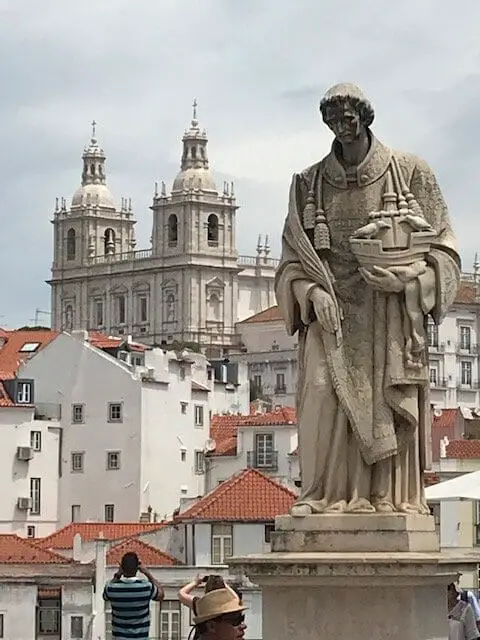
How to get to São Vicente de Fora?
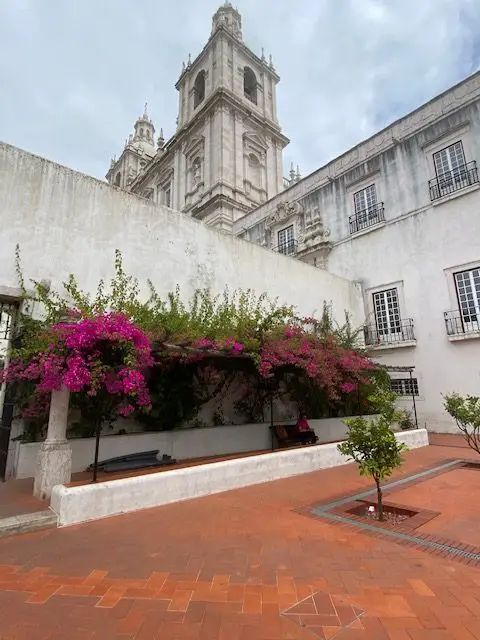
The church and monastery are located at Largo de São Vicente in Alfama.
GPS coordinates: 38.715075935095776, -9.12780030593686
Take Tram 28 and get off at Largo da Graça. Follow the signs to Sao Vicente de Fora.
If you visit on a Tuesday or a Saturday, you can also go to the Thieves’ Market (Feira da Ladra) – a flea market that is held behind the church.
Bus 734 from Martim Moniz Square
Some parking is available at Largo de São Vicente and Campo de Santa Clara.
Mosteiro de São Vicente de Fora Hours
Open daily, 10 am – 6 pm (last entry 5 pm)
Closed January 1, Good Friday, Easter, May 1, December 25
Admission to São Vicente de Fora
It is free to enter the church, but make sure you pay the €5 to enter the monastery, the cloisters, the crypt, the cistern, and explore the rooftop.
Children 12 and under are free. Ages 65 and over are free.
The São Vicente de Fora Monastery provides 90-minute guided tours in English, Spanish, or Portuguese. There is a €2 charge per person, and you must register in advance at Guided Tours – Mosteiro de São Vicente de Fora (mosteirodesaovicentedefora.com)
What will you see at São Vicente de Fora?
You will see the Church (Igreja) de São Vicente de Fora and the Monastery (Mosteiro de São Vicente de Fora).
The facade of the church has three doors, above which are three recesses with statues, and above those are three windows. Bell towers flank the three doors.
After São Vicente de Fora introduced this look, it was repeated at several other Portuguese churches until the 18th century.
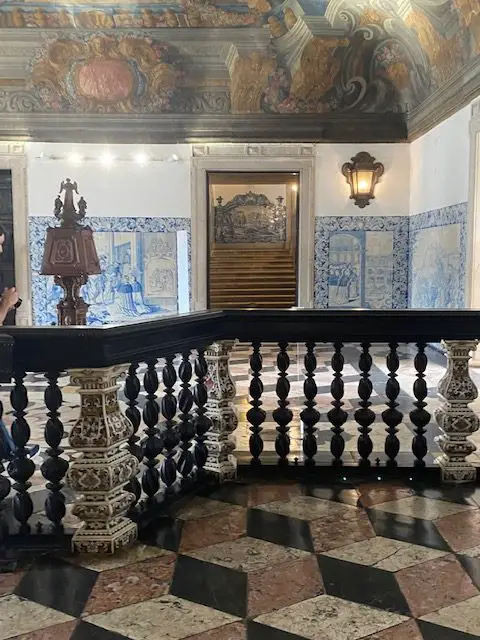
The monastery’s old entry hall with its black and white marble floors, and blue and white azulejo walls that illustrate the reconquest of Portugal was decorated by Dom João V.
The azulejos tell of Dom Afonso Henriques, the first King of Portugal, the occupation of the Moors, and the construction of the Lisbon Cathedral on the site of their Grand Mosque.
The São Jorge Castle is rendered not the way it looked during the Moorish occupation but the way it appeared during the 18th century.
The ceiling of the vestibule is a beautiful fresco painted by the Italian artist Vincenzo Baccarelli. The special perspective that he introduced depicts St. Augustine.
St. Anthony once lived in the monastery, and it is believed that the Chapel of St. Anthony was built in the same space that was once his cell.
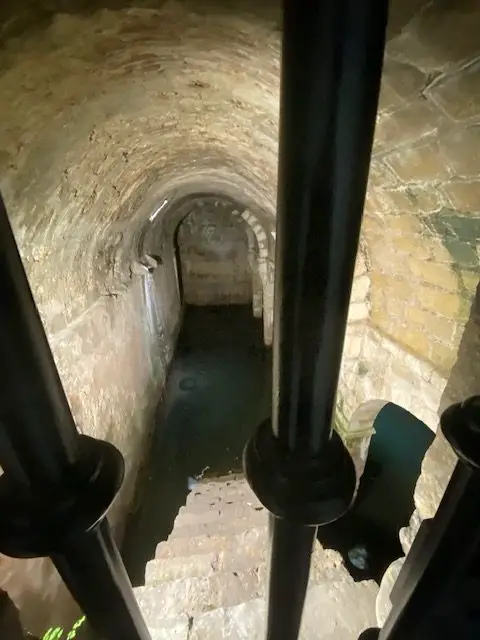
There is a cistern was used to collect rainwater. It is the only remaining part of the original 12th-century structure.
The white-walled cloisters also feature brilliant blue and white azulejo tiles, even on the upper-level balcony.
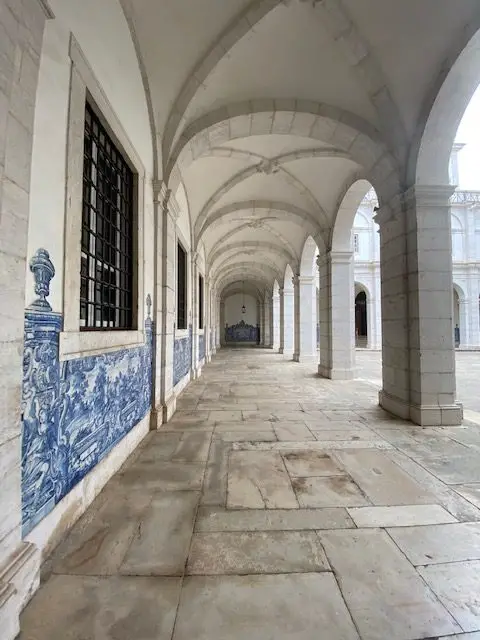
Throughout the monastery, there are more than 200 blue and white azulejo panels depicting the monks and the history of Lisbon.
Other panels depict religious themes, while those in the cloisters focus on daily life.
Some of the tiles illustrate fables from the French fablist Jean de La Fontaine. They were created by artist Policarpo de Oliveira Bernardes between 1740 and 1750.
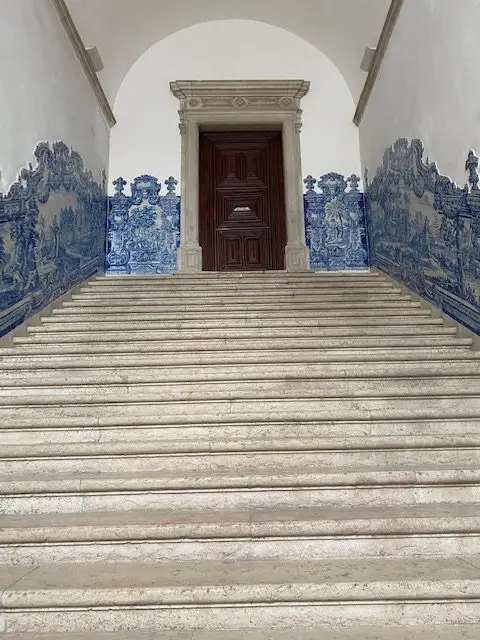
The São Vicente de Fora Monastery is one of the best places in Lisbon to see azulejo tile. The other best place to enjoy azulejo in Lisbon is the Museu Nacional do Azulejo. For more information, see my article, National Tile Museum in Lisbon | A Quick Guide
The sacristy has floor-to-ceiling multi-colored marble walls decorated with floral motifs.
On the second floor, in addition to another 38 azulejo panels, visitors see an archaeological collection, a museum dedicated to the church of Lisbon, and a collection of seashells found all over Portugal.
The rooftop viewing deck has fantastic 360-degree views of Alfama and the river.
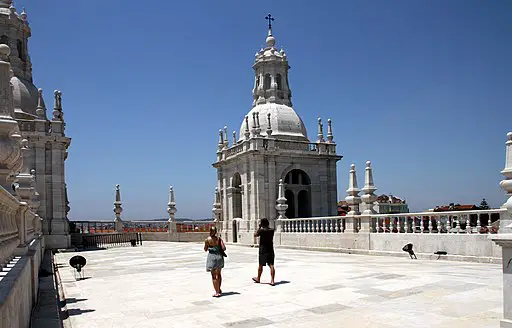
The magnificent building is a striking piece of architecture that points out how rich Portugal, or its royals, and the church were at one time.
Ironically, it sits in Alfama, which was one of Lisbon’s poorer neighborhoods, with many homes there only getting plumbing at the end of the twentieth century.
Today the building is a royal mausoleum. It is the pantheon of the House of Bragança.
The Bragança kings ruled Portugal from 1640 until 1910.
There are 49 members of the royal family buried in the building.
Tombs that hold kings are marked by gold crowns.
Princess Catherine of Bragança is buried in the monastery.
She became Queen of England in 1662 when she married King Charles II.
The borough of Queens, NY is named in her honor, and visitors to Lisbon can see a beautiful sculpture dedicated to her near the Vasco da Gama Bridge on the east side of Lisbon.
The Chapel of the Meninos de Palhavã, with its creepy skull tombs, holds two of the illegitimate sons of King João V.


King Carlos I, and his son, Prince Luís Filipe, were assassinated at Praça do Comércio in 1908 as part of the Republican Revolution.
They lie side-by-side, below a statue of a crying, widowed queen.
His other son, Manuel II, the last King of Portugal, took the throne but was forced to flee the country in 1910. He is also buried within the pantheon.
In addition to the Bragança rulers, many of Lisbon’s bishops are buried in the Pantheon of the Patriarchs.
São Vicente de Fora Monastery also holds a large collection of religious artifacts.
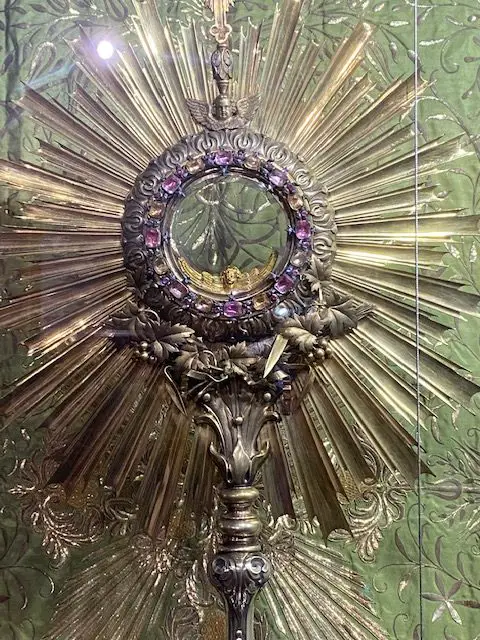
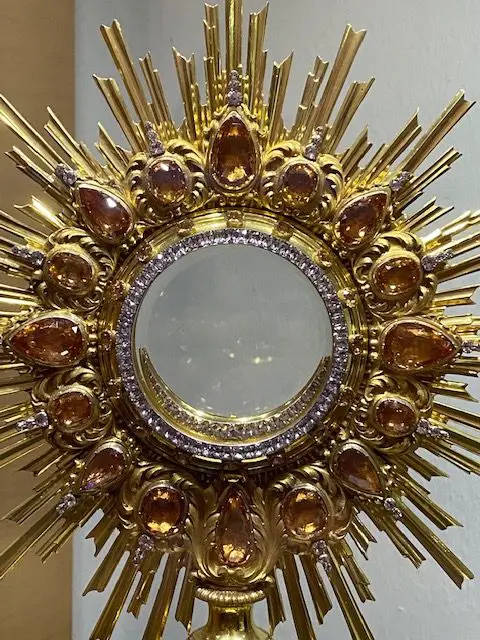
History of São Vicente de Fora
During the Siege of Lisbon in 1147 Dom Afonso Henriques vowed that if he was able to defeat the Moors and take Lisbon for Christianity, he would build a monastery and dedicate it to the memory of St. Vincent of Zaragoza.
Ground was broken n the monastery that same year, just outside of Lisbon’s city walls, hence the name “Fora” which means “outside.” It is one of the oldest buildings in that you can still see in Lisbon.
In 1582, King Felipe II of Spain also became King of Portugal. His biggest project was reconstructing the São Vicente de Fora Monastery.
Architects Filippo Terzi, Juan Herrera, and Baltazar Álvarez designed the building. Herrera also designed the Escorial in Spain.
São Vicente de Fora was the first Mannerist style building in Portugal, but would be the prototype for later churches and monasteries around the country.
The artistic treasures – azulejo tile, painting, sculpture, were not added until the 17th and 18th centuries, under the reigns of Dom Pedro II and Dom João V.
The building was largely damaged in the 1755 earthquake. The monastery originally had a dome, which was not rebuilt.
The monastery was operated by the monks of the Order of St. Augustine until 1834.
In that year, all of the religious orders in Portugal were forced to disband and give up their property.
The Mosteiro de São Vicente de Fora was then turned into a burial tomb for the kings of the Bragança House.
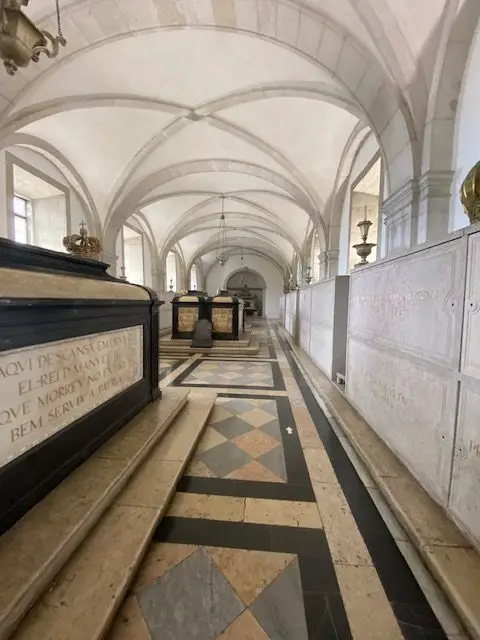
What’s Nearby?
- Tram 28 Where does Tram 28 stop? All you need to know about Tram 28
- Miradouro da Graça Read my A guide to the beautiful Miradouro de Graça viewpoint for more information.
- Feira da Ladra (Thieves Market) at Campo de Santa Clara Feira da Ladra – Lisbon’s 750-year-old flea market
- National Pantheon (Church of Santa Engrácia) See my article The dome in Lisbon, Santa Engrácia – The National Pantheon of Portugal
Thank you for reading. I am not affiliated with any businesses mentioned in this article.